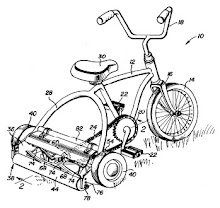Wind Week at MIT just wrapped up. I learned a lot in the special-topics class ESD.930, and particularly enjoyed that the visit from Steve Nolet of TPI Composites enabled me to geek out about prepreg laminates and honeycomb cores. The most thought-provoking talks came during the all-day Friday workshop in which we focused on grid integration. Most of the serious work in wind theory these days is on bidding strategies/market design, as well as in figuring out cost allocations for transmission upgrades and standby generation. These all assume that storage is expensive and we have to think about the grid in a different way.
Eric Ingersoll from General Compression raised a different idea: cheap storage can turn wind from an intermittent resource to a baseload generator. He estimates that 200-300 hours of storage will enable any given facility to be fully dispatchable at a combined cost below that of coal. (And that wind + storage is cheaper than wind + peaker plant.) This raises a lot of interesting questions, like "why not use less storage and call yourself a peaker unit" or "why not chuck the wind and do intra-day arbitrage?" But that's not the point of this post; I'm more interested in the general idea of technical breakthroughs making complex hacks unnecessary.
Remember the beginning of the previous decade? In 2000 we knew that the broadcast model for video would be supplanted by something else, but not what. We knew that the TV of the future would be customizable, timeshiftable, and able to access an infinite array of content. The form of the solution was a huge unknown given the tiny pipes available at the time. TiVo connected a hard drive to the cable box. BitTorrent hooked your hard drive to a world of pirated content via your crappy ISDN line. AppleTV 1.0 did the same thing, but wrapped the juicy content in a razorwire shell of DRM. Deep thinkers imagined legal peer-to-peer multipoint distribution systems and even freely shareable files with embedded advertising. We even briefly flirted with the notion that low-quality YouTube clips of teenagers injuring themselves with fire would replace professional media. Broadband is now a reality and we now pretty much just stream studio TV or movies through Hulu, AppleTV 2.0, or Netflix. The infrastructure necessary to engage in broad realtime streaming of video is quite complex with its Akamai nodes and high-speed backbone, but the user model is radically simplified. We have more or less jettisoned those crazy workarounds and now I can watch old episodes of "Arrested Development" on my phone as I walk to the (T).
System limitations necessitate complex hacks that sometimes have shorter lives than the limitations that spawned them. Will cheap storage turn wind integration into a no-brainer before we implement the perfect intermittent wholesale electricity market? I have my doubts in the short run, but wouldn't be surprised if some day in the distant future we look back on Fred Schweppe's revolutionary power system market designs as a transitional hack.

